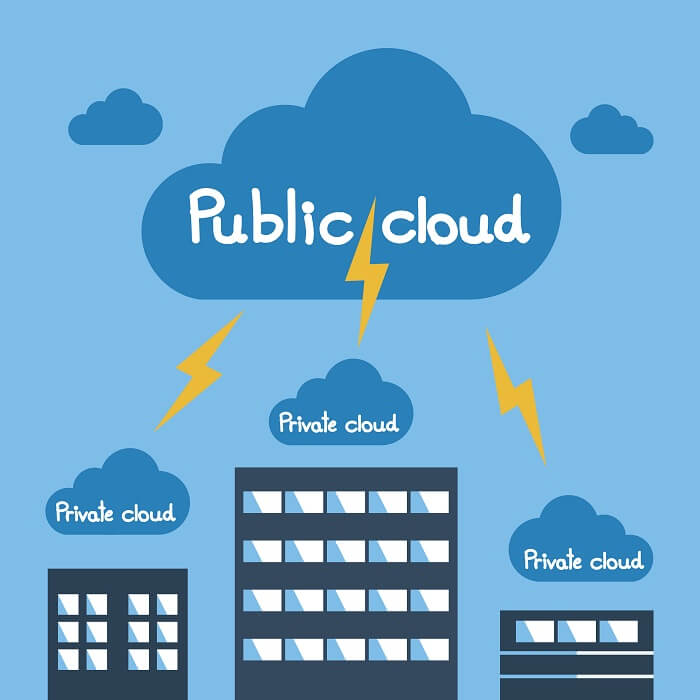Kanchan Mirani: So in addition to the developer, it's the infrastructure architect who actually benefits probably the most from it because the idea is what it gives the infrastructure architect the ability to do is locate parts of the infrastructure where it makes sense to locate them, make it all work together. You know, there's the developer. Sure. And the developer usually relies on the infrastructure architect for things like that. And that's where the biggest impact comes in to be able to create almost that distributed infrastructure so that, you know, it performs in the most efficient manner, both in terms of TCO and performance.
Brett Tanzer: So then to your question on what's in it for developers, what I would say is for both developers and infrastructure architects, it makes it easy for them to access technologies to go build more efficient applications and continue to do that in the cloud as the technology stack evolves and the infrastructure offerings we bring with Nutanix to market continue to expand.
Jason Lopez: The world of IT has changed dramatically since the 1990s when Brett Tanzer started at Microsoft. He thinks back to on-prem systems that were built around local control with capacity being a major issue and managing efficiency being one, as well, and, always planning around future development. There was a cost curve, Tanzer says, where an organization had to learn how to run the operation before understanding how to make it efficient. But when he talks about trends, while the role of IT is being re-defined with new apps and platforms, some of the challenges remain the same.
Brett Tanzer: There are a lot of trends around the cloud. I think the ones we hear most about of late are the desire to really improve TCO in the face of the current climate. And so that's certainly something we're spending a lot on. And how to rewrite applications with an eye on automation. We have great infrastructure at Microsoft that enables AI developers to go build their own models and train them for bespoke scenarios, but we also have a lot of systems and tools that make it possible for someone to take advantage of AI models that have been created and optimize them for their domain. And so we can embrace roughly all tiers of AI development in Azure. Like everything else, customers have to figure out how it brings value to their stakeholders and then how to apply the tool.
Ken Kaplan: You're able to do that based on some other customers that might have a similar challenge.
Brett Tanzer: We provide infrastructure, we provide guidance, we provide tools, and we do try to provide thought leadership. You know, we have a lot of partnerships in the AI arena that really make it helpful for us to go bring that next-generation technology to customers who might be all along the spectrum.
Kanchan Mirani: So yeah, we talked about AI and we hear a lot about generative AI and new kinds of technologies like the metaverse and there's obviously lots of excitement around blockchain. And sustainability is becoming a big, big topic. Look at all these interesting trends, which excite me, I'd love to know what excites you, Brett, just in general, not necessarily related to Azure. What is it that's becoming something that's exciting for you personally?
Brett Tanzer: I think for me personally, probably given kind of where I am in my career and where I am in my family, it's just the opportunities that a young person has trying to build something with technology today. Whether it's one of my children who wants to be a broadcaster who is able to use technology to provide access to data that he didn't have before. On the other side, my son who is trying to become a singer on Broadway and now has the opportunity to really debut his craft virtually online to audiences and he has access to communities long before he is ever successfully landed a role. You know, you just see such a broadening of opportunities that are available to everybody, given what technology can do. And I like being on the very bleeding edge of that and helping customers who've got these big investments, take them to the cloud as their first step so they can make the next step. I think there are another 20 or 30 years on it.
Ken Kaplan: At least.
Kanchan Mirani: Yeah, there's a kind of democratization of technology and you know, the way it's kind of impacting not just businesses or individuals that’s leading to a lot of opportunity to meet those needs really. So it's, it's a little bit of chaos, but it's full of opportunity I'd say.
Brett Tanzer: It's really an exciting time. The work that we're doing today will have societal benefits for generations to come. The technology barriers have been knocked down. You have access to compute that you didn't have before. You have access to scientists and data. You have access to open-source solutions where you can take the expertise of others and apply them to your domain. A lot of those barriers that existed that just prevented people from doing it, get knocked down. And so the cloud and next-generation technologies are helping to enable that. What we do with it as a society though, is still to be determined, but we certainly have a lot more enablement and power to go solve those problems today than we did when I started my job 30 years ago.
Jason Lopez: Brett Tanzer, is the Vice President of product management at Microsoft. He chatted with Ken Kaplan, the Editor-in-Chief of The Forecast, and Kanchan Mirani, director of product marketing at Nutanix. I’m Jason Lopez. This is the Tech Barometer podcast produced by The Forecast. We invite you to listen or read up on other stories about technology and the people in tech at www.theforecastbynutanix.com.






